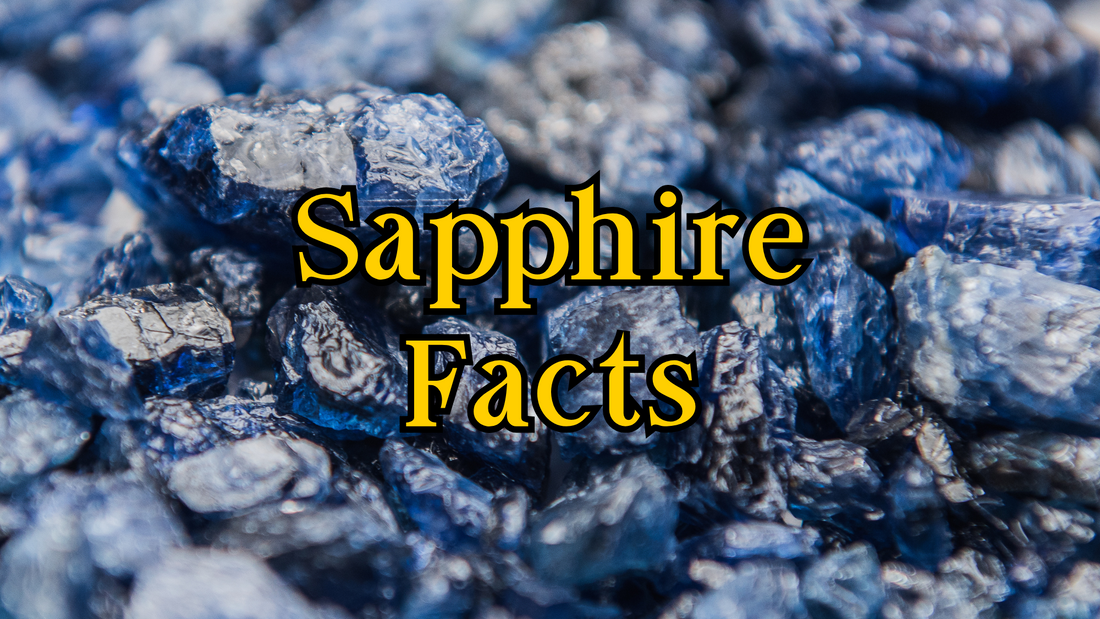
10 Fascinating Facts About Sapphires You Might Not Know
Sapphires have been cherished for centuries, admired for their rich colours, durability, and captivating history. While many people know that sapphires are famous for their deep blue hue, there’s much more to these gemstones than meets the eye. Here are ten fascinating facts about sapphires that might surprise you!
 Sapphires Come in Every Colour Except Red
Sapphires Come in Every Colour Except Red
When most people think of sapphires, they picture a rich, deep blue gemstone. However, sapphires actually come in a stunning variety of colours, including pink, yellow, green, purple, orange, and even white. The only colour they don't come in is red—because red corundum is classified as ruby!

The Rarest Sapphire Colour is Padparadscha
Among the many colours sapphires can exhibit, the rarest and most coveted is padparadscha. These stunning gemstones display a delicate pinkish-orange hue, resembling the colour of a lotus flower. The name “padparadscha” itself comes from the Sinhalese word for this exotic bloom.

Some Sapphires Glow Under UV Light
If you ever get the chance to view a sapphire under ultraviolet light, you might be surprised to see it glow! Some sapphires fluoresce with a faint orangey-red glow, which can indicate whether the stone has been heat-treated. Natural, untreated sapphires are more likely to exhibit fluorescence, while heat-treated ones often do not.

Sapphires Have Been a Popular Choice for Engagement Rings for Centuries
Sapphires have long been used in engagement rings, symbolising loyalty, honesty, and faithfulness. They were especially popular in the Victorian era when coloured gemstones were widely used in jewellery. Today, sapphires remain a sought-after alternative to diamonds, with famous examples such as Princess Diana’s sapphire engagement ring (now worn by Kate Middleton) keeping the tradition alive.

Sapphires Were Once Believed to Protect Against Poisoning
In medieval times, sapphires weren’t just worn for their beauty—they were also believed to have protective powers. It was thought that a sapphire could detect poison by changing colour and that wearing one could safeguard the wearer from illness or betrayal. While we now know this isn’t true, the idea of sapphires as protective talismans persists in some cultures.

According to Legend, the Ten Commandments Were Carved in Sapphire
Some traditions claim that the stone tablets bearing the Ten Commandments were made of sapphire, symbolising divine wisdom and eternal strength. This myth further solidified sapphire’s association with sacred knowledge and the heavens.

Some Sapphires Have a Star Inside Them
Certain sapphires display a mesmerising phenomenon called asterism, where a six-rayed star appears to float across the surface of the gem. These “star sapphires” contain tiny needle-like inclusions of the mineral rutile, which reflect light in a way that creates this magical effect. The most famous example is the Star of India, a massive 563.35-carat star sapphire housed in the American Museum of Natural History.

Sapphires Are Used in High-Tech Industries
Sapphires aren’t just for jewellery! Their extreme hardness and scratch resistance make them perfect for high-tech applications. Synthetic sapphire is used in watch crystals, high-end smartphone screens, and even spacecraft windows. Their ability to withstand extreme conditions makes them valuable in both scientific and industrial fields.

The Logan Sapphire is One of the Largest Faceted Sapphires
One of the largest faceted sapphires in the world is the Logan Sapphire, which weighs a staggering 422.99 carats. This deep blue gemstone, set in a brooch and surrounded by diamonds, is on display at the Smithsonian Institution in Washington, D.C. Its immense size and rich colour make it one of the most famous sapphires in existence.

Some Sapphires Have Unique Colour Zoning Patterns
While many sapphires are a uniform colour, some display striking colour zoning, where different shades form patterns within the gemstone. One of the most famous colour zoning patterns is called Pharaoh’s Eye, where a yellow core is surrounded by blue. These naturally occurring patterns make each sapphire unique and add to their appeal for collectors and jewellery designers alike.
 Sapphires are far more than just beautiful gemstones—they are steeped in history, myth, and even modern technology. Whether you admire them for their brilliant colours, fascinating optical effects, or rich symbolism, there’s no denying that sapphires hold a special place in the world of gemstones.
Sapphires are far more than just beautiful gemstones—they are steeped in history, myth, and even modern technology. Whether you admire them for their brilliant colours, fascinating optical effects, or rich symbolism, there’s no denying that sapphires hold a special place in the world of gemstones.
